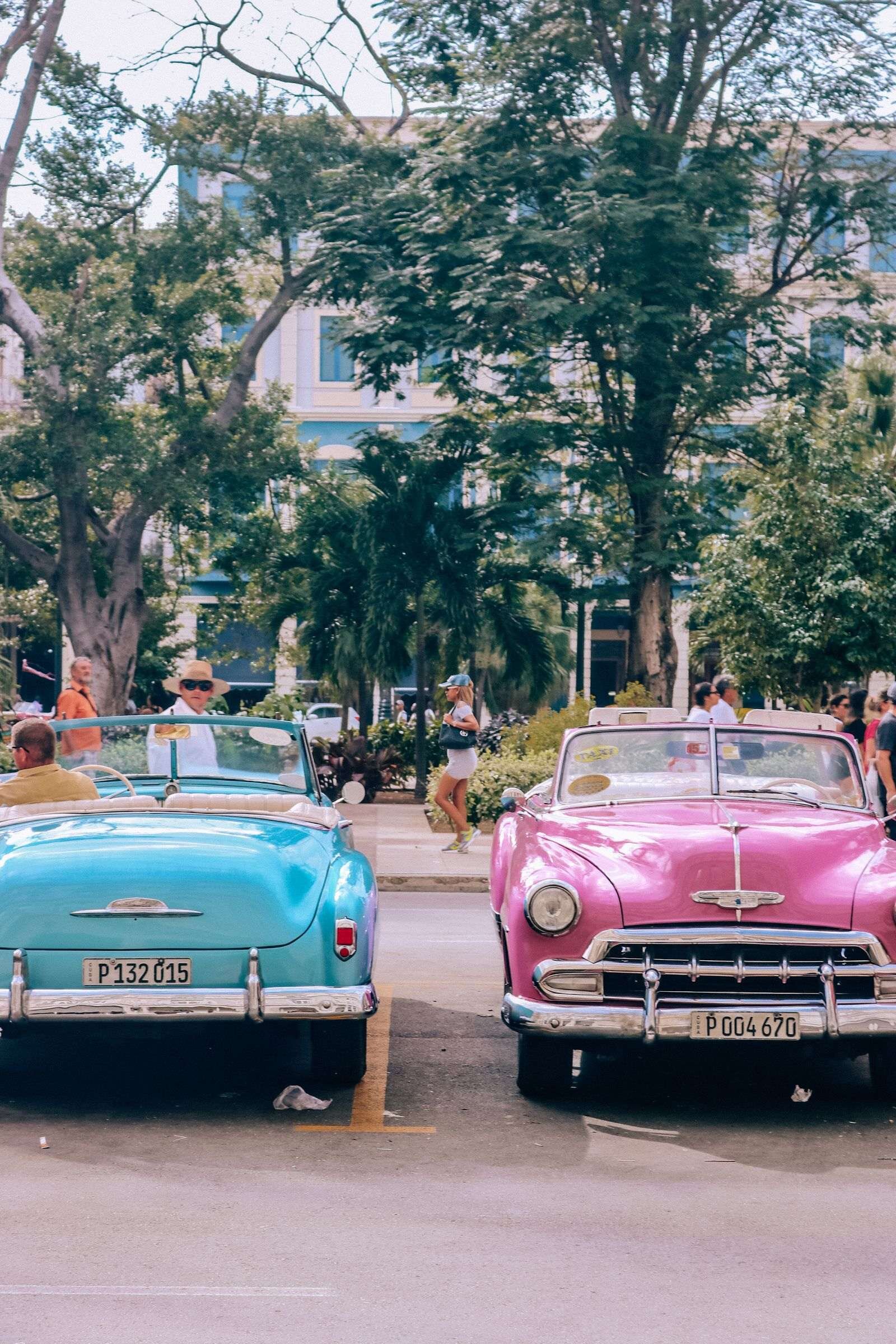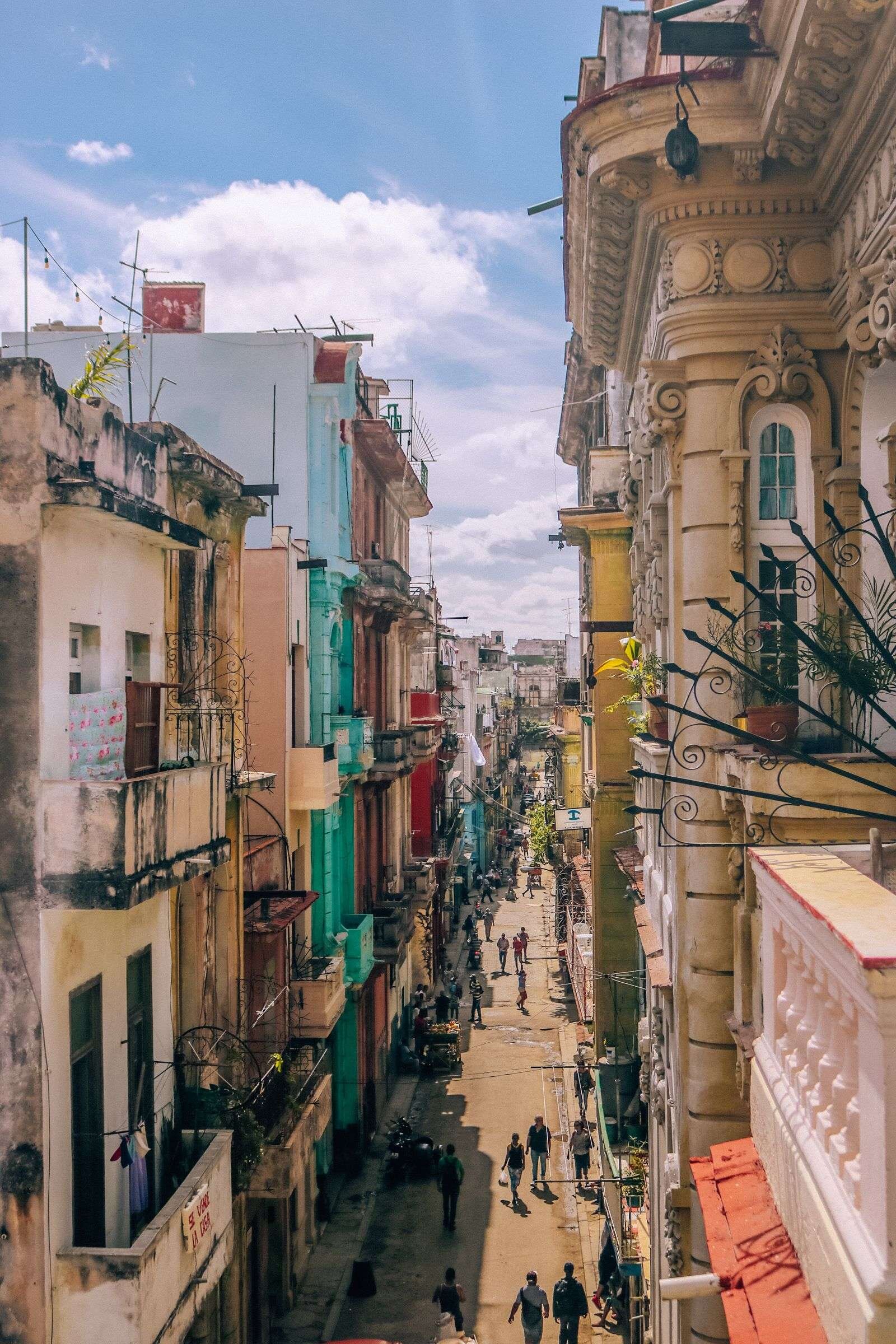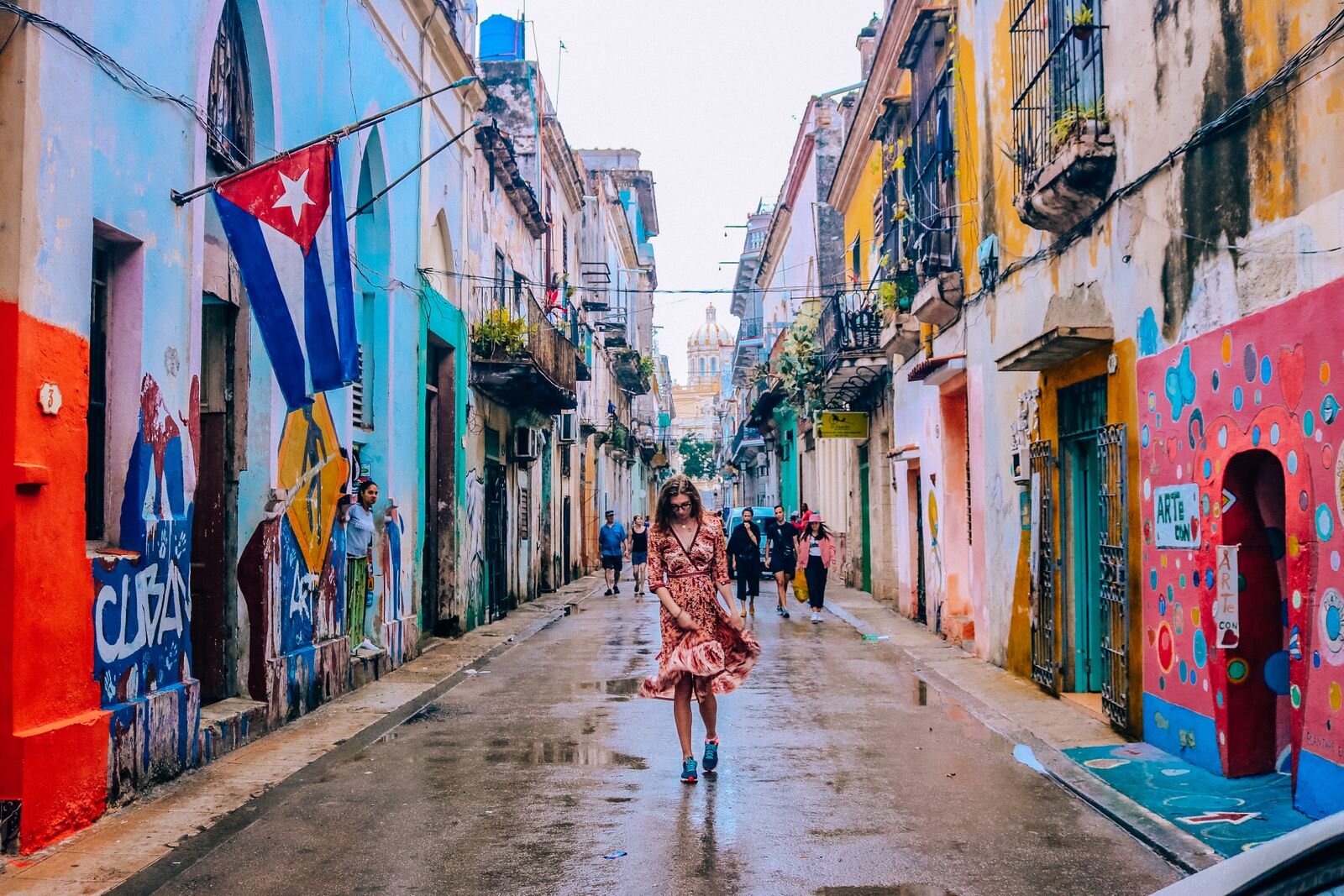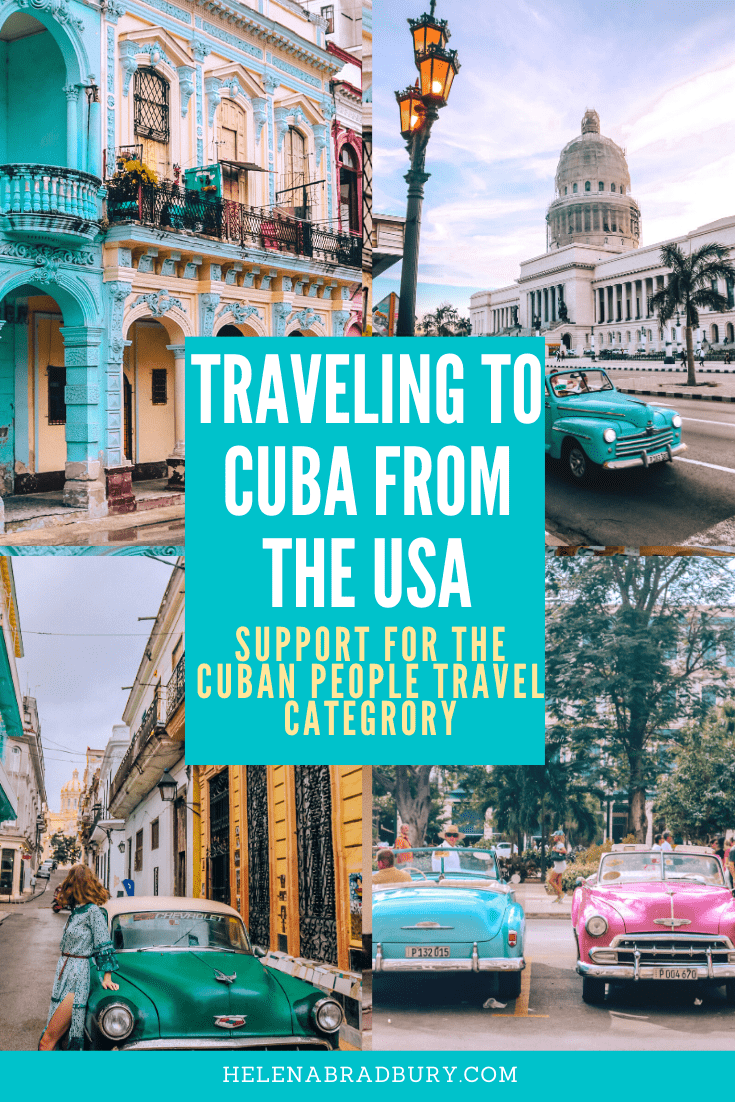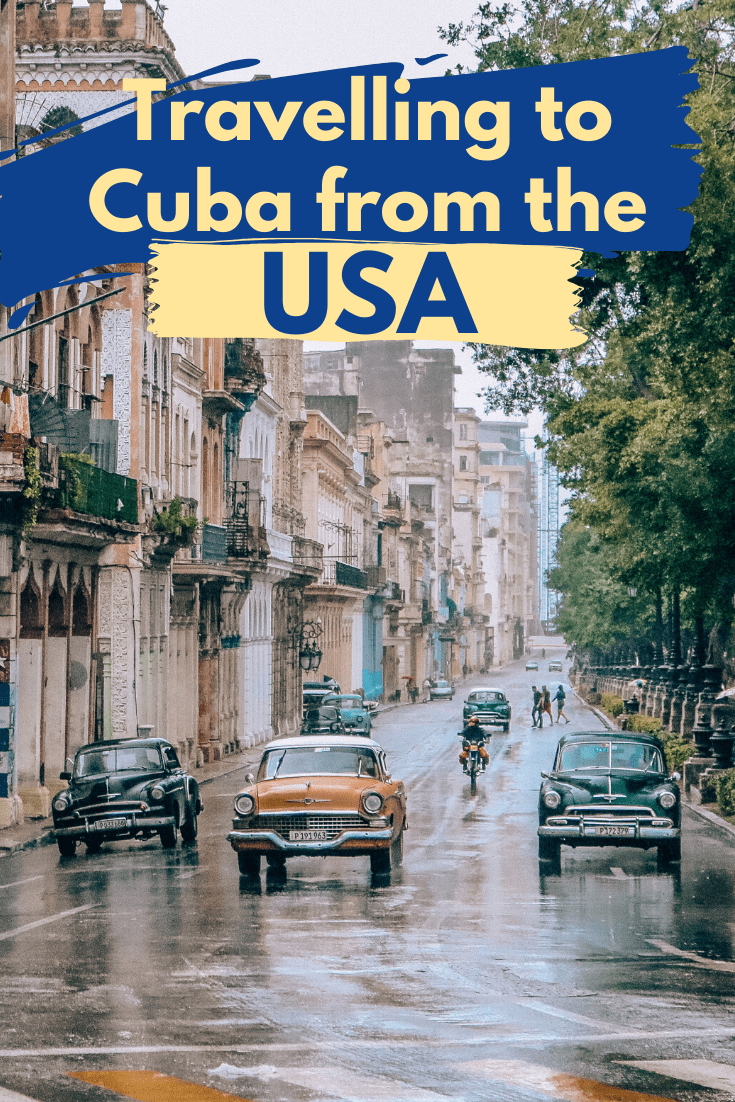Disclosure: This post may contain affiliate links, which means I may receive a commission if you click a link and purchase something. While clicking these links won't cost you anything, they will help me to keep this site up and running! Check out the full disclosure policy for more details. Thank you so much!
My trip to Cuba was pretty interesting because I’m British and in theory could have flown from the UK to Cuba on a tourist visa with no problem. However, I was travelling with my partner, who is American and we would be flying into Cuba from Fort Lauderdale, FL. I quickly learnt that this meant I was bound by US regulations and had to follow the same criteria for traveling to Cuba from the USA as an American citizen would, because I was travelling from an American departure point.
This really is something important to bear in mind if you are not American but are travelling to Cuba via America - the flights are cheap, it’s a quick flight, no reason not to - just bear in mind there’s a little more work involved.
The changes put in place by the current US administration have put a lot of Americans off traveling to Cuba, they either think that they can’t or think they will get in trouble if they do. From our experience this couldn’t be further from the truth so I want to share the steps I took me make sure both myself (as a British citizen travelling to Cuba from America) and Taylor (an American citizen) were covered. I promise you it’s easier than you think!
What you will need for traveling to Cuba from the USA:
A full, valid passport. If you are America you cannot travel on a passport card.
A travel category as outlined by the US government
A Cuban Tourist Card (also referred to as a Tourist Visa)
A full itinerary of your travel plans for the duration of your stay
Full health/travel insurance for the duration of your stay
Keep your receipts for five years
The US websites are extremely vague and difficult to navigate for all this information. So below I’m going to explain each of the above and how I went about planning my trip.
Which category will you be travelling under?
Travelling to Cuba for tourism from America is prohibited. However there are approved categories for travel and the US government requires American citizens or anyone departing for Cuba from America to declare that they are travelling under one of these 12 categories:
Family visits
Official business for the US government, foreign government and certain intergovernmental organisations
Journalism
Professional research or meetings
Educational activities and people to people travel
Religious activities
Public performances or competitions
Support for the Cuban people
Humanitarian projects
Activities of private foundations or research or educational institutes
Exportation, importation or transmission of information or informational materials
Authorised export transactions
Don’t be intimidated by this. This may look like a lot but if you’re travelling to Cuba for a personal holiday or trip (i.e. Tourism) you only need to be looking at two of these categories. People to People travel is your travel category if you’re going as part of a travel group or travel tour, this includes cruise ship day trips.
If you are travelling independently as I was, you will want the Support for the Cuban People category as this will give you the flexibility you need. There are some requirements for this category which include staying in a Casa Particular (locally owned private accommodation), interacting with or contributing to Cuban culture and privately owned local businesses for at least 6 hours a day, keeping an itinerary to prove that you did this. You can find my full 3-day itinerary which meets these requirements in this blog post - I go into more detail about the criteria you need to fulfil for travelling to Cuba under the Support for the Cuban People Category.
These categories are self-assigned, you do not need to report or register your category choice with any authority or governing body. These categories work on an honor system and from our experience, we were never required to disclose our chosen category at any point on our trip. We wrote it on the immigration card and visa information but it was never questioned and our transition through immigration both on the way and the way back was no different from any other normal immigration experience in the US. Of course if you are asked by a US official (it is not likely, but just a reminder), use your common sense and DO NOT say you visited for “a holiday” or for “tourism”.
It’s important to note that declaration of these categories are a US requirement ONLY and Cuba is more than happy for you to call yourself a tourist, hence the Tourism card or Tourism Visa which is required by Cuban immigration.
How to get your Cuban Tourist Card/Visa
The terms Cuban Visa and Cuban Tourist Card are used interchangeably but they both mean the same thing. Everyone visiting Cuba is required to have one an they allow you to stay in the country for 30 days. If you are American or travelling from America then your tourist card will be pink. Everyone else’s is green.
Cuba visa
We looked at a lot of options for getting the tourist card, it can be bought in advance, from the embassy or from your airline. In advance seemed more expensive ($70) but I would advise checking with your airline as a lot of them offer it to you and it can be bought at the airport before your flight. We travelled with JetBlue from Fort Lauderdale airport in Florida and the visa cost $50. We bought it at the check-in desk for our flight with a credit card. ViaHero has a great article outlining all your options for buying your visa.
Despite the US government regulations, there are still direct commercial flights from the US to Cuba several times a day from Ft. Lauderdale, Miami, JFK and LAX and the process really was like any other commercial flight you would take. You are advised to arrive at the airport 3 hours before though, presumably to allow enough time to get your relevant visa as the line was very long!
Your Cuban travel itinerary
If you are travelling under the Support for the Cuban People category, you will need to keep a record of the activities you do during your trip that contributes to that. The category requires 6 hours a day or interacting with Cuban people and contributing to the local, independently owned businesses. Cuban people have only been able to own their own private business for a few years and as such it really is beneficial to support the local economy by only frequenting their businesses. I try to shop and eat local as much as possible at home, so just think of it as doing the same thing in Cuba and then 6 hours really isn’t that hard.
The Code for Federal Regulations has a page outlining what activities the US government expects to be carried out under this category. However I didn’t find it to be very accessible or clear information. So here are the essentials and what I did:
The view from our Casa Particular balcony
Stay in a Casa Particular. These are locally owned accommodation options, often in a family home - imagine it like a B&B or an Airbnb. Airbnb even has a specific accommodation category to filter by Cuban Casa Particulars and this is what we used to find ours. This Casa Particular is where we stayed and the location was incredible.
Interact with your Casa hosts over breakfast.
Eat and drink in local, independent restaurants and bars. The old town is full of them, try as much as you can!
Pay for city tours run by locals - the tour we did was the best of our trip and locals know all the best places and can answer your questions better than anyone.
Visit local markets or artisan stores. They are everywhere, both in the touristic and less touristic areas.
Visit the Museums about Cuban history and culture.
Go to art galleries or arts and music events.
Take a dance class, a language class, a cooking class, or a mojito mixing class!
DO NOT visit or spend any money in anywhere on the restricted entities list issued by the US government. These are all placed owned or affiliated with the Cuban military. You can find the list here.
Don’t get too hung up on this last point, because while it’s important, if you’re doing all the things in the list above, you shouldn’t cross paths with any of the restricted places anyway.
A great resource that we ended up using was ViaHero, they have so much information about travelling to Cuba and travelling under the various categories. You can even pay a local Cuban on there to plan a compliant itinerary for you for just $25 a day.
I really struggled to find a compliant itinerary online so I’ve shared mine here for you.
Travel Insurance requirement
The Cuban government requires you to have full health or travel insurance to cover the duration of your stay. We were asked to confirm this when we bought out visas.
You will also need to keep all your receipts for 5 years
The US government requires you to keep all your receipts from your trip to Cuba for 5 years. We did find this very difficult as everywhere only accepts cash so often there is no facility for a printed receipt. Sometimes we had a handwritten one or we took photos of where we were. We also have our online booking details for our Casa and the tours that we did.
From our experience and all the research I did, I have not found an instance of someone being asked to present their itinerary on entering back into the USA, or having to prove any of what they did. Both our journey out and our return journey were nothing out of the ordinary and we never had to prove or supply any evidence of our trip or travel category etc. While I’m not suggesting you shouldn’t bother with any of it, I am saying don’t get too hung up on it and think it’s too risky to travel to Cuba. We were worried before our trip but it was so straightforward and we had all the relevant documents ready to show on our arrival back into the US but they were never asked for. So just do your prep, make sure you have the relevant information in case, but don’t worry about it, you’ll be surprised how easy it still is to travel to Cuba.
If you have any questions at all about my trip or would like any recommendations, feel free to drop me a message! There are also my other posts about my trip and our itinerary in more detail.
colourful streets in Havana, Cuba
Pin this to save it for later to help plan your future trip!
Flights: I use Expedia to find great flights and the best deals all over the world, they have regular sales and offers so I always check their website. I also check CheapOair to find cheap deals on round trip flights.
Car Rental: I love the customer service I've always gotten and the variety of options with Rental Cars. But for short notice rentals, I've been using Expedia for the last year, they always seem to have great one-day rates or last-minute rates from the main rental companies.
Accommodation: I prefer the flexibility of booking accommodation with Booking.com so I can cancel or change my reservation without a fee or only pay on arrival for most properties. For longer or more unique stays I prefer AirBnB because you can get the long stay discount, you can also find more unique properties and book experiences with talented locals and businesses. For my budget trips, I always stay in hostels and book through Hostelworld because they have great guarantees if anything does go wrong. If you arrive and your booking is not at the property, they refund the full deposit AND give you $50 extra credit.
Tours and organised trips Although I don’t use tours that often, I do like to book local experiences or day trips once I reach my destination. For that I use GetYourGuide because it has the biggest selection and variety of tour and experience options.
Travel Insurance: I currently use SafetyWing Nomad Insurance. Which allows me to pay a rolling monthly fee to cover my long term travels.
My camera gear and equipment: I use a Canon 77D with an 18-135mm lens or a 50mm lens. And a DJI Mavic Mini Drone. For all my gear including laptops, tripods and more camera accessories read my travel photography gear guide.
